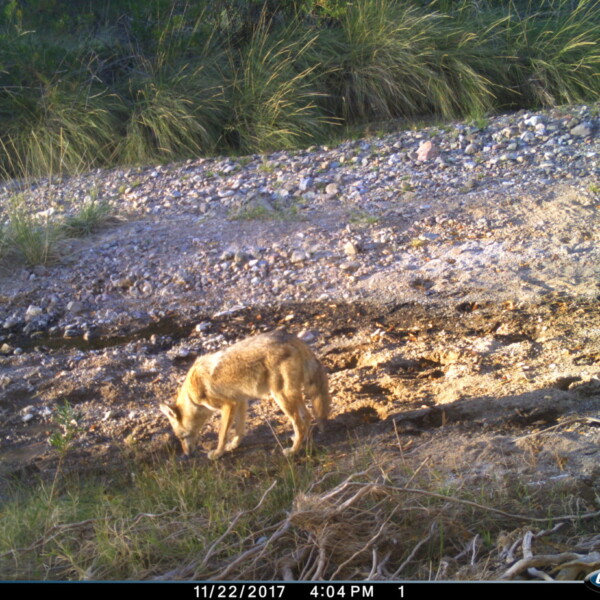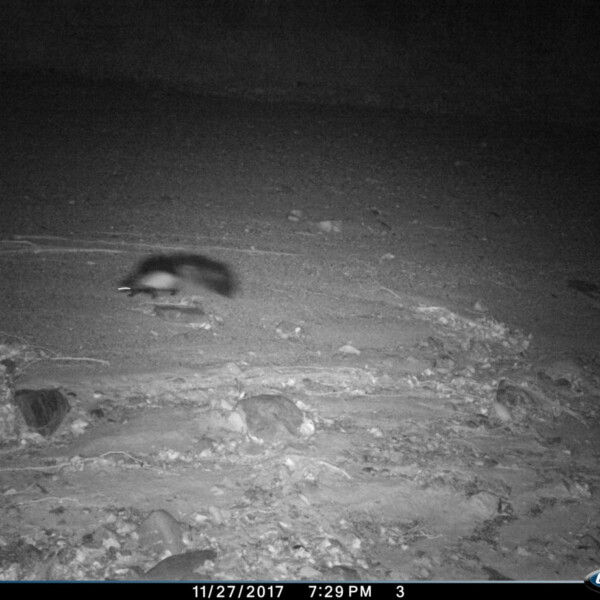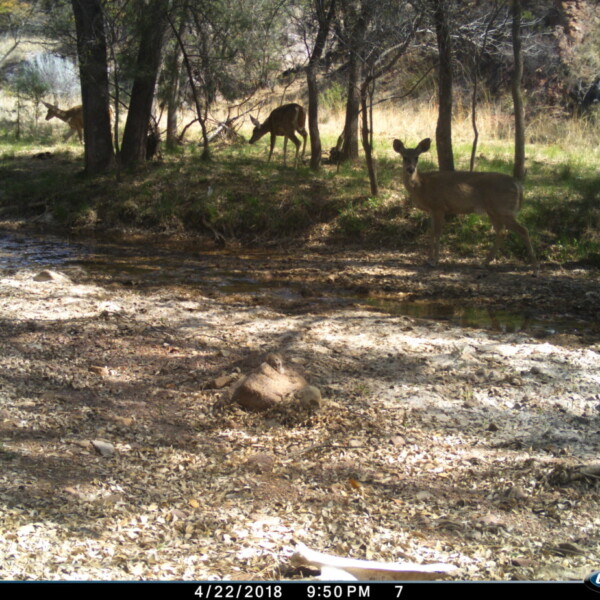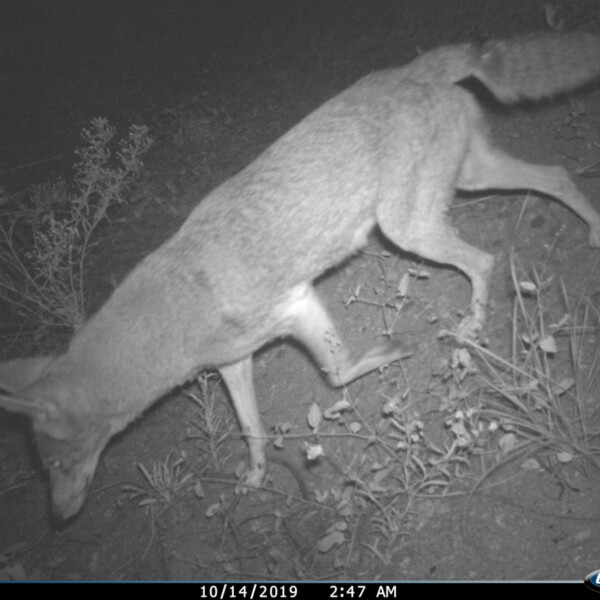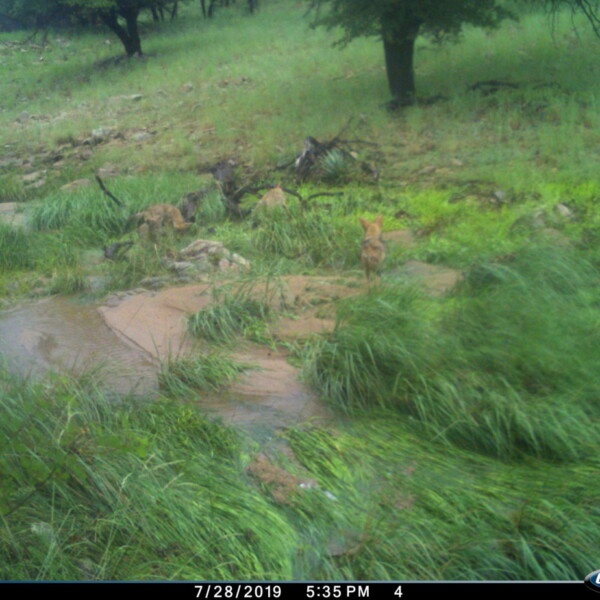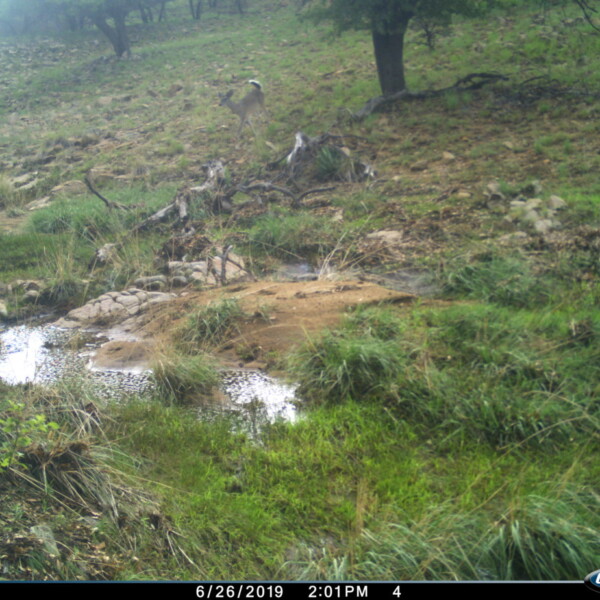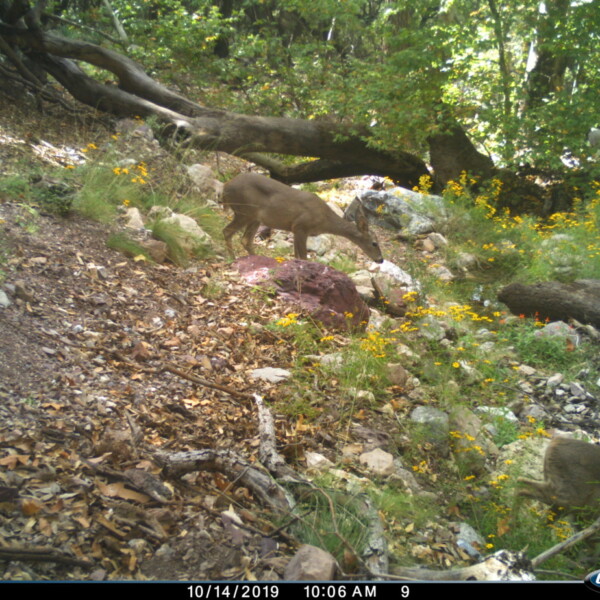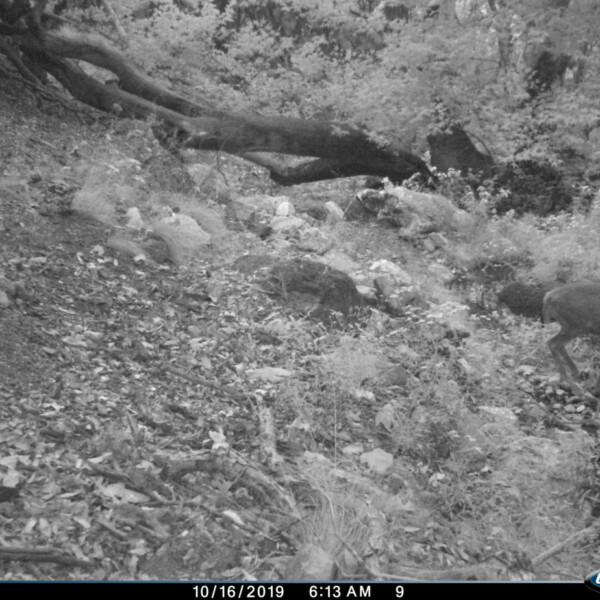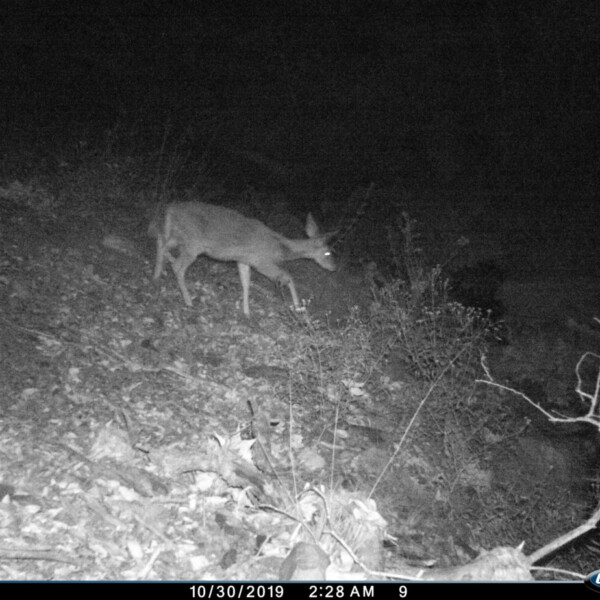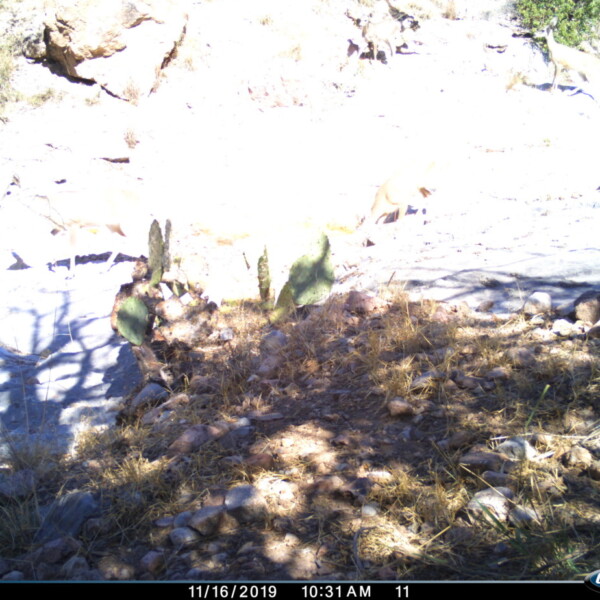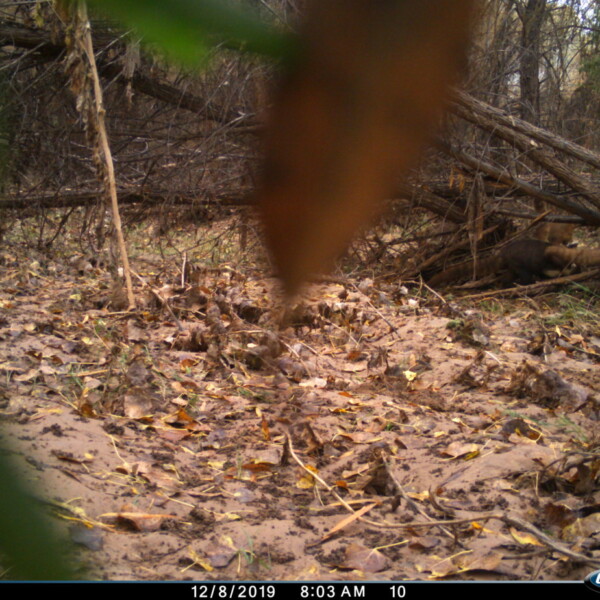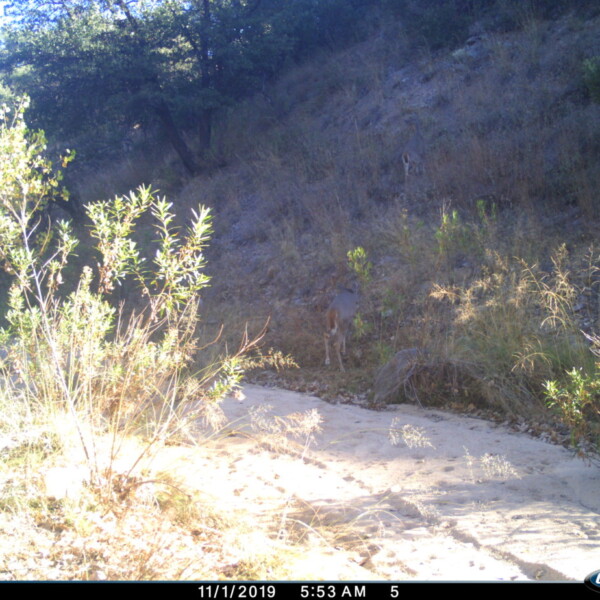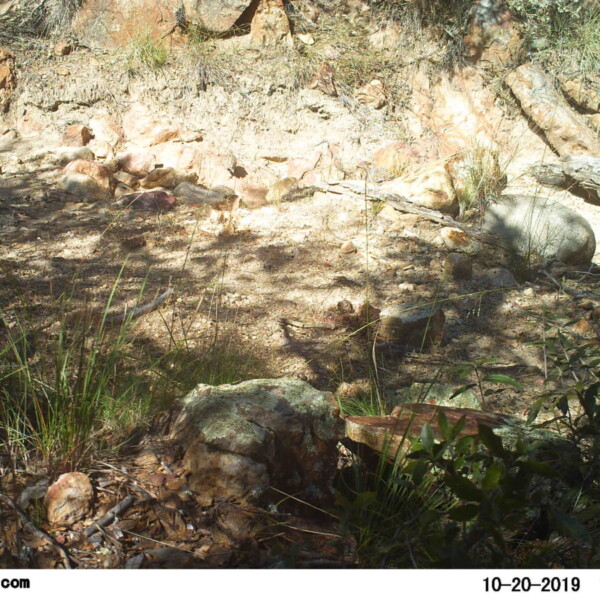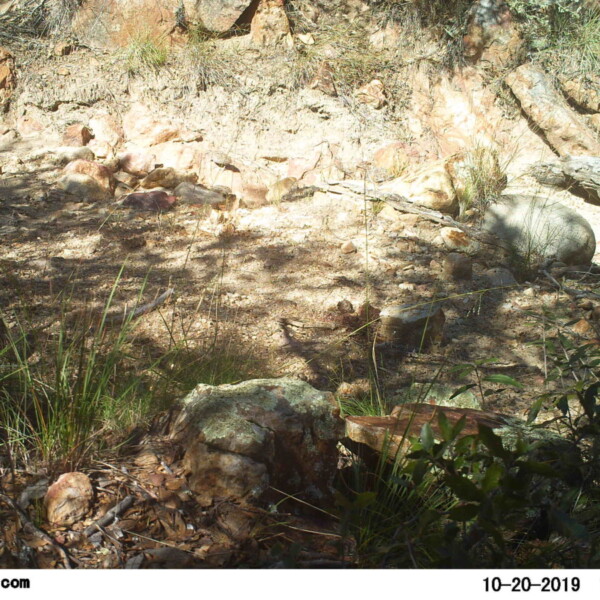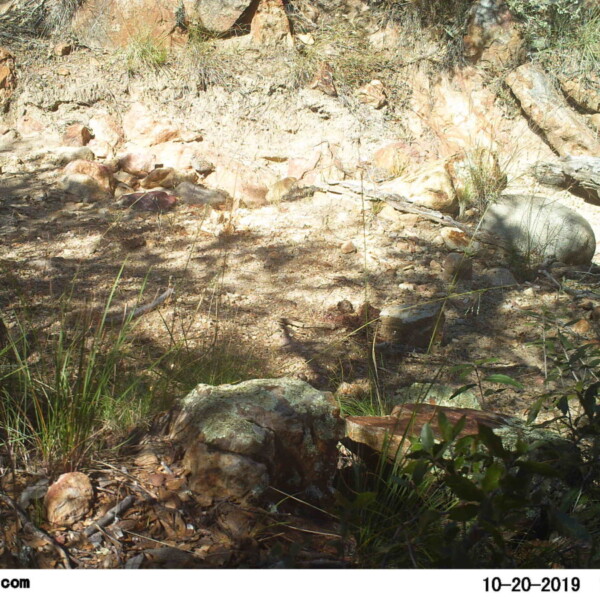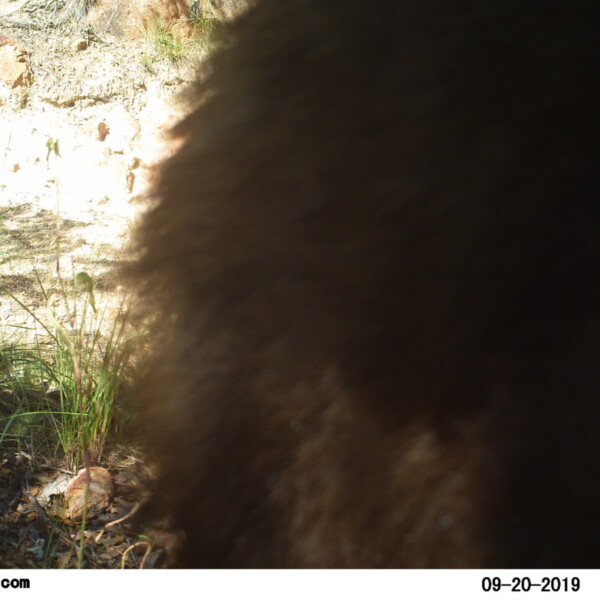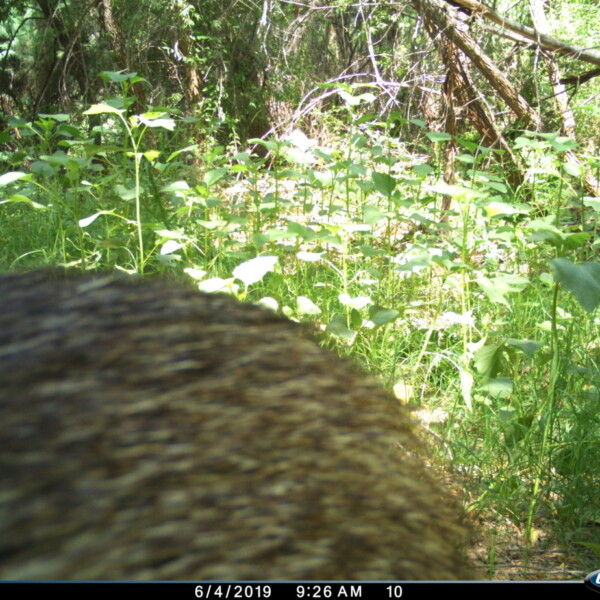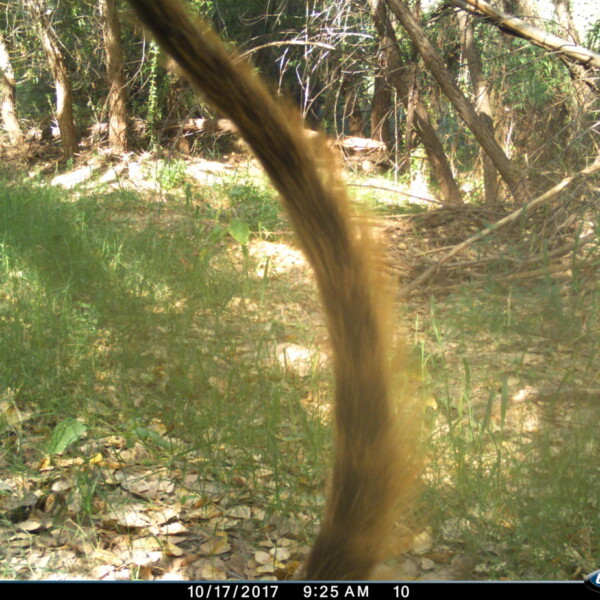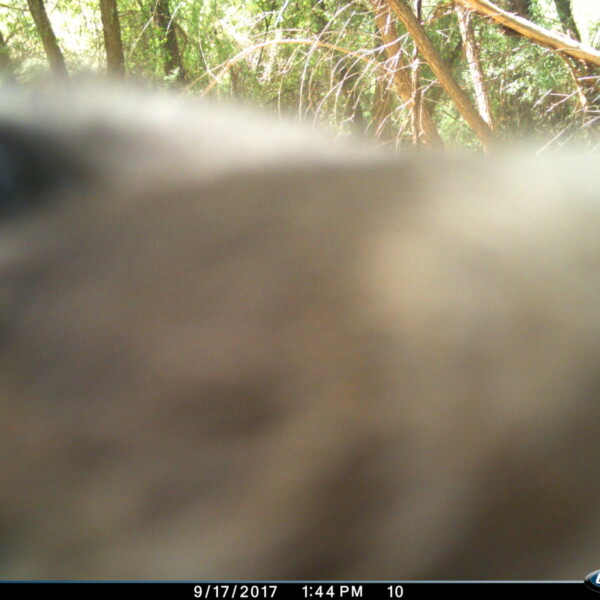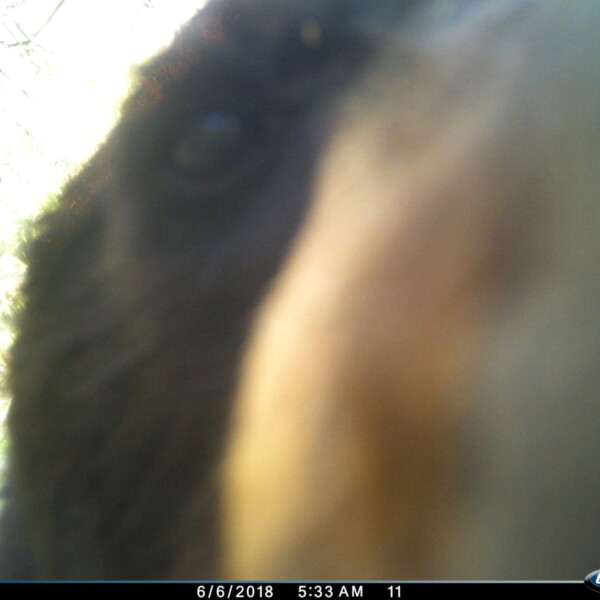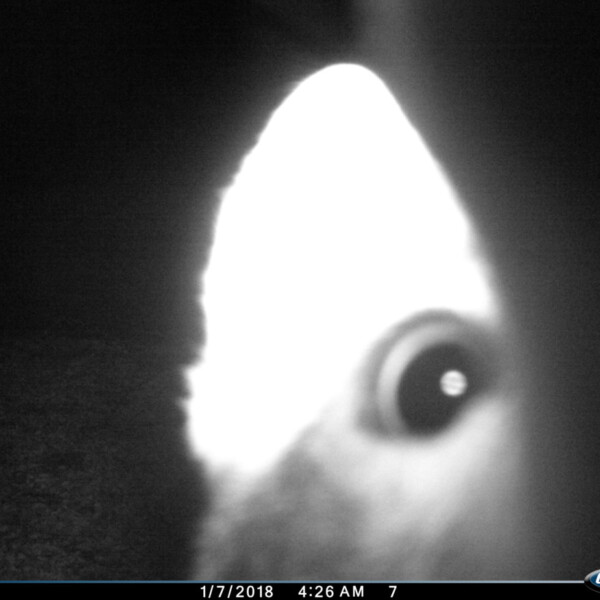Not all of our wildlife images are Instagram worthy, our cameras take tens of thousands of photos each year and the majority of them are just of animals moving about their day. Being able to pick out and identify animals in each wildlife camera is a skill and requires training your eye to look for. Below are some tips and tricks to keep in mind to help you find and identify animals in the pictures.
Search Image and Scale
The placement of the camera can really change how the images will turn out and thus affect the search image. Before you even start looking for animals, get a sense of the scale of the image, and assess how much space an animal could take up. That way you can better look for animals in that field of view. Let’s use coyotes for scale. If a camera is pointing close to the ground, and the coyote takes up a lot of the photo, we know the field of view is small and animals will be easier to spot in that limited area. Compare that to a photo that covers a larger landscape, the coyotes take up a much smaller part of the image. The search image must expand to look in all corners of the image, so we don’t miss animals.
Time of Day
Photos taken during the day are often the easiest to ID because there is ample light and color to see. Photos taken during dawn and dusk often have a gray-scale color and can hide the animal more than photos taken at night. The higher contrast of nighttime photos often makes animals stand out more. However, the infrared night photos are often less clear than daytime photos so any fast movement can result in blurs. Being able to distinguish the blurry creature is a needed skill if you want to ID all your photos.
Animals Far Far Away
If there appears to be nothing in the picture, look again. Animals have great camouflage abilities and often blend in with the environment, especially when they are in the distance. A common problem people have when identifying photos is assuming there is nothing there when in fact there is an animal in the background. Take your time and look carefully in the background for each photo.
Tip! If you suspect something is there, flip back-and-forth between that photo and surrounding pictures and look for changes in movement. Your eye will pick up that change in movement better than playing I-Spy. Toggle through the three photos below to spot the Montezuma quail
Here for my Close Up
No Butts about it! Many animals will walk right in front of the camera and all you will see is a fuzzy hind end or tail. Be familiar with the species in your cameras area and the coloration of each. Additionally, context clues of size and previous photos could tell you what animal it is. (Click on each photo to learn what animal it is!)
Sometimes we have nosy animals that are curious about the smell or flash of the camera, which leads to great photos, but might take a second to figure out what they are.
I hope this was helpful, and if you have any questions or have an animal you can’t figure out what it is, email Meagan ([email protected]).

